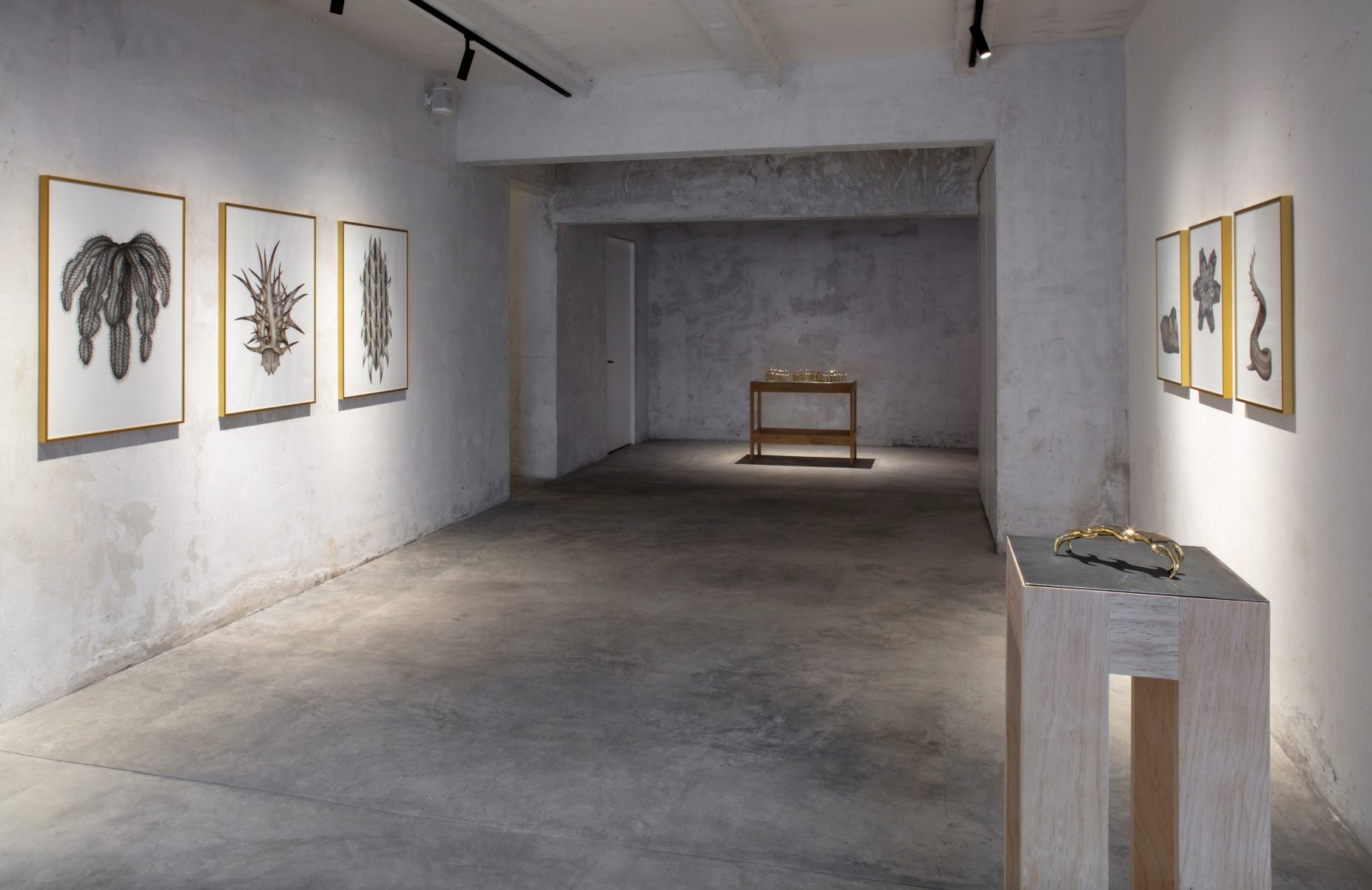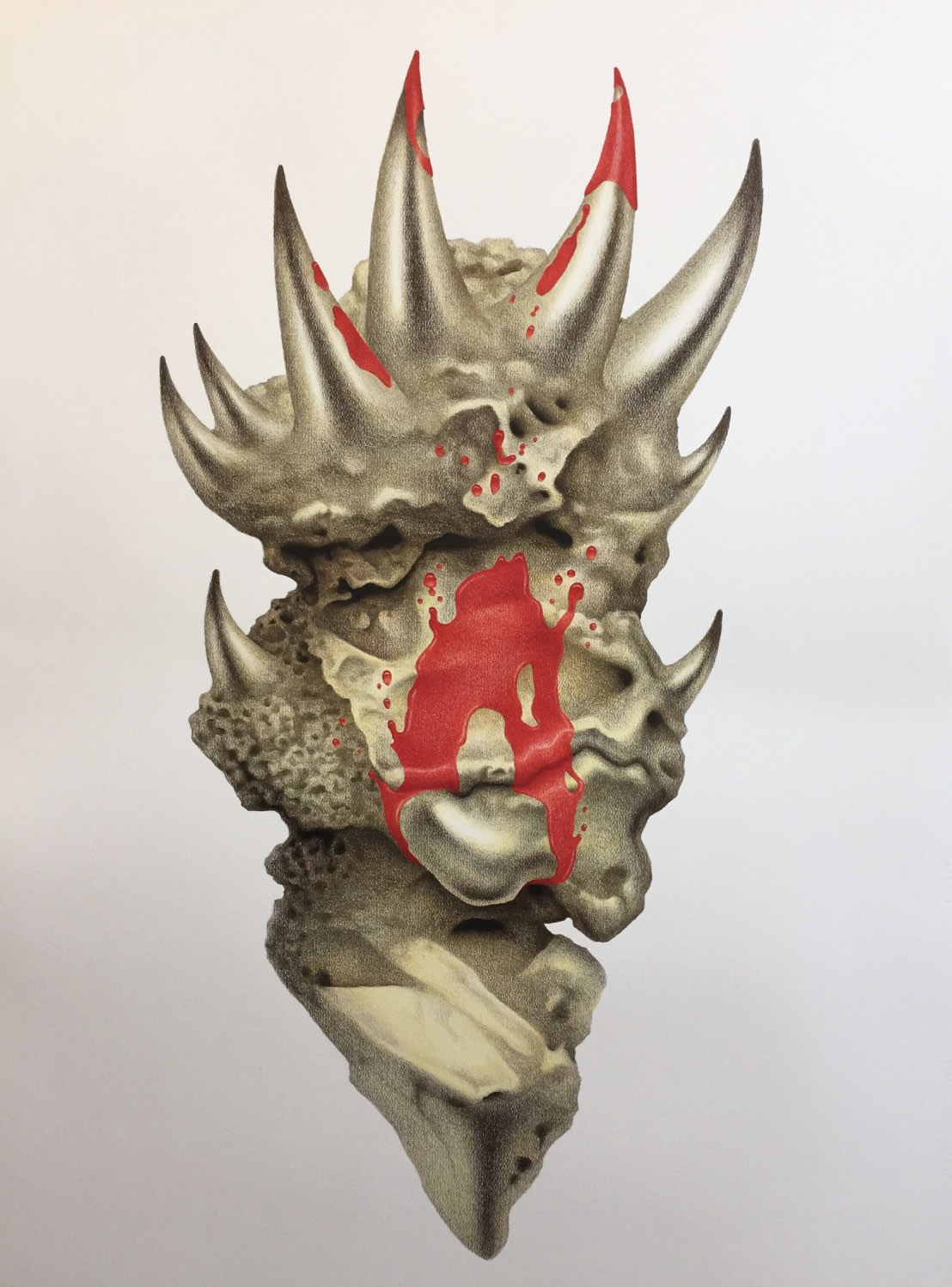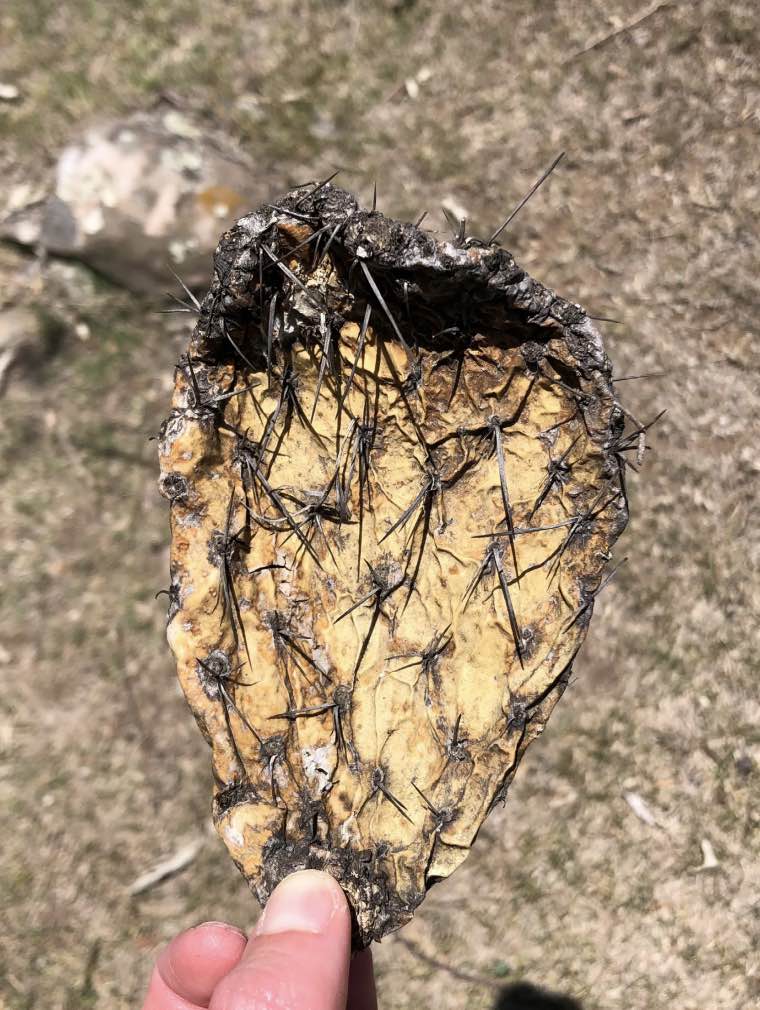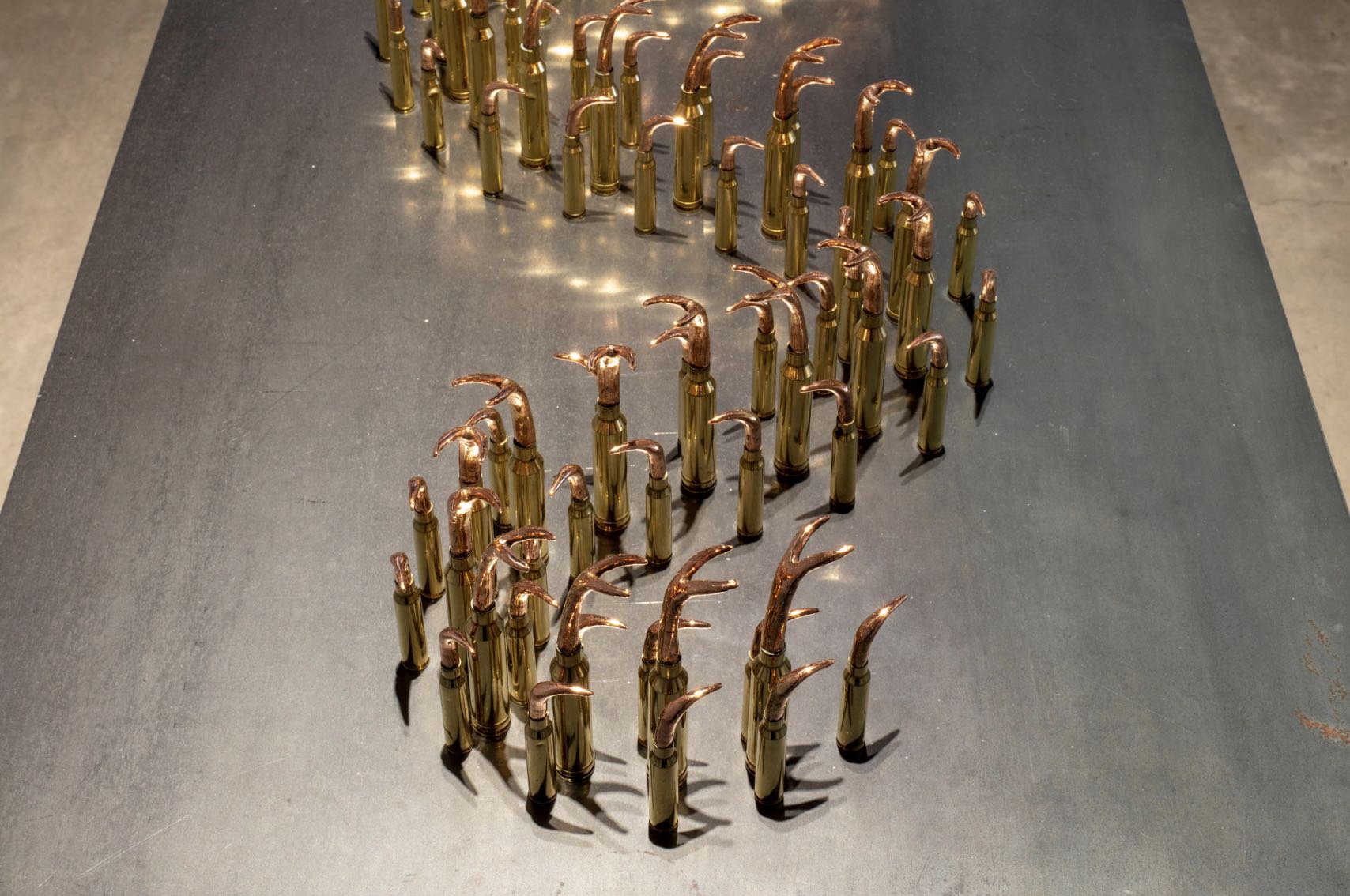
Review
Geoaesthetic Timelessness: Desert and Design in Miriam Salado’s Bestial
by M.S. Yániz
At N.A.S.A.L.
Reading time
4 min
The bone of even the simplest animal is an encounter between geological processes in which matter has been twisted and has made possible a form, a movement, a resistance; its usefulness is to allow the one embodying the bone to survive. Life, territory, material contingency, and war are the axes of the poetic assemblages of Miriam Salado (born in Hermosillo, Sonora, in 1987).

N.A.S.A.L. is currently presenting Bestial: a speculation, an archaeology, a geological museum, or a design sample composed of a series of hyper-precise drawings, metal sculptures, and three different photographs. The artist says that Bestial is based on the imaginary of the Yaqui community and its relationship with the landscape, war props, and nature. Salado told me that the Yaquis would use poison in their spears and arrows so that, without needing to pierce their enemies with the spear, their enemies would die of poisoning by touching it. To ensure its effectiveness, they would test it with cacti: they would pierce a cactus with their poisoned spears and if the cactus woke up dry, that was a sign that the poison was effective. This tale of testing by means of arms thus combines ancient wisdom, warfare, defense, and a complex understanding of nature as technique.

Under this speculative premise, Miriam Salado makes metal drawings and sculptures that are schemes and records of geological possibilities of nature and of the libido entailed by both anthropomorphic history and organic survivalism. I imagine the history uniting the exhibition as such: geological forms and contingencies—call them humans, plants, animals, and minerals—face a desert territory for hundreds of years, and in order to survive each form becomes hostile and its silence becomes material. Warlike animism.
Since yesteryear, the desert has been an ideal battlefield: to desertify the earth is to convert it into a space ready for modification, in the name of the monopoly of the divine and in opposition to terrestrial idols. Thus, the desert opens up as the site of possibilities on the horizon of the war between creation and obsolescence. Salado’s designs are made possible by placing her creation in this space, which allows her to obtain her license as a giver of life and as a cruel strategist who produces the technical forms with which everyone will have to attack each other under the suspicion that there are no innocent objects. This non-naivete is likewise found in the materials she uses in her sculptures: bullet casings and precious metals resulting from the plunder of mining, threatening the peoples who defend both the land and ancestral wisdom.
It would be worth asking how the bullets got there, where the metal comes from, and who was part of that process. The works operate with a basis in a genealogical conception of materials; each image and sculpture corresponds to a material, an idea of the very same, and its organic or weapon function. The question always remains as to whether, by using the materials being denounced, one is also participating in the cycle of production and exploitation. I do not believe that 140 bullets and a couple kilos of metal affect the development of the deterritorialization of a people or are accomplices in ecocide, but it may be necessary to ask the question in the context of an exhibition dealing with matter and territory.

In the exhibition there lies an idea of time that dislocates an instant identification with what is seen. There is something anachronistic and therefore immanent in Bestial. It seems as though the objects represented in the drawings are ancient: relics abandoned in a time when objects were alive, spoke the language of stones, and lived with the gods and darkness. At the same time, they can be read within an imaginary of the most advanced speculative designs allowed by digital technologies. Its white background, the perfection of the line, and the unfeasible probability of the material existence of designs, together place them in a timeless temporality that only exists in the fictitious and autonomous space of art, where the horned lizard becomes an alliteration of its defensive force, turning into a violent gavel, and the bullets into tongues and claws.
Finally, the fracture in the idea of time enables and opens up explorations with biological organizations towards the past and the future. In doing so, the use of questionable materials, as in extractivism, becomes a serious game, with the real possibilities of the creatures and forms that Salado proposes as nature’s routes and contingencies as well as the desire for self-annihilation.
Translated to English by Byron Davies
Published on October 5 2022